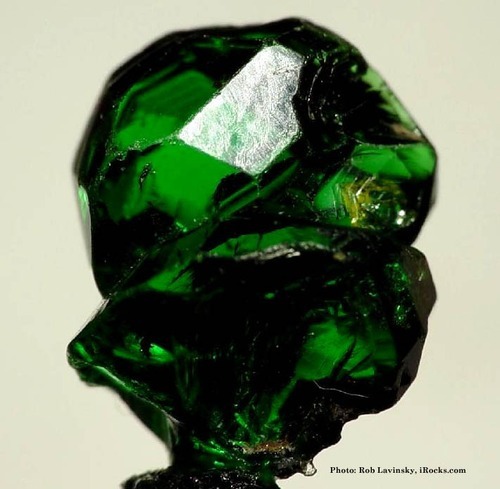The brilliant and versatile garnet offers a wide range of possibilities as the official birthstone for the month of January. If you don't favor the traditional red color, you can select from a rainbow of alternatives, including yellow, blue, purple, black, pink, orange and green.
The garnet with the longest history is the deep Bohemian red variety, which was coveted by the ancient Greeks and Romans thousands of years ago. The newest variety, green tsavorite, has a storyline that could rival the latest murder mystery.

Tsavorite's history dates back to 1967 when geologist Dr. Campbell R. Bridges encountered some strange, potato-like nodules of rock in the northeast region of Tanzania, according to an account published by the International Colored Gemstone Association (ICA).
The material was deemed to be a green grossularite, a mineral belonging to the garnet family. It exhibited an extraordinarily intense color and had a good transparency. Bridges wanted to bring the gems to market, but the Tanzanian government was going through political upheavals and would not provide the mining permits. Bridges was forced to take a different tack.

The doctor assumed that the Tanzanian deposit was part of a larger geological formation that probably extended across the Tanzanian border — and he was right. In 1971, Bridges rediscovered the brilliant green garnet in neighboring Kenya. That country's government officially sanctioned the mining and exportation of the gems, and Bridges was in business.

In 1974, Tiffany and Co. took notice of the new stone and launched a huge advertising campaign to promote it. Tiffany president Sir Henry Platt is credited with naming the grossularite mineral "tsavorite" in honor of Tsavo National Park in Kenya. Apart from the Tanzanian source, tsavorite has been found in only one other place on earth — Toliara Province, Madagascar.
Bridges' mining operations were consistently threatened by wild animals and thieves. Bridges lived in a tree house to protect himself from jungle predators, and employed a python to watch over the valuable gemstones (the natives apparently loathed pythons).
Despite his precautions, Dr. Bridges met his demise in 2009 when a mob of 20 attacked him and his son on their property in Tsavo National Park. It is believed that the attack was connected to a three-year dispute over access and control of Bridges' gemstone mines. Bridges was 71.
No comments:
Post a Comment